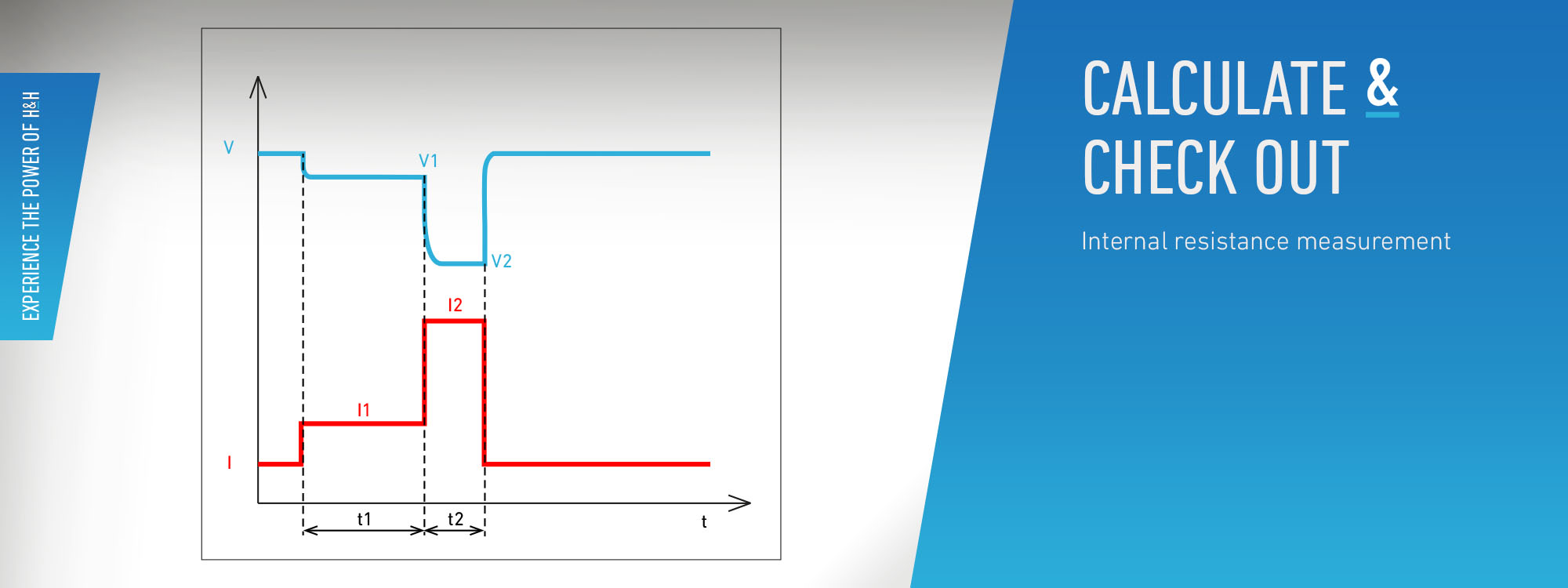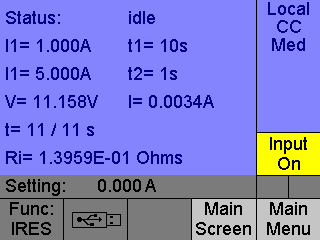
The electronic load is able to measure the internal DC resistance of the connected DUT.
The determination of the internal resistance is done in the way specified in several standards for batteries and accumulators, e.g. DIN EN 61951, DIN EN 61960:
At two definable points in time (t1, t2) the load measures the DUT’s terminal voltage (V1, V2), each at an associated load level (I1, I2) (see sketch in the title picture).


At the end of the first load level I1 the voltage U1 is measured at the DUT. Then the second, higher load level I2 is immediately set. At the end of the duration of I2 the DUT’s voltage U2 is measured. Then the load calculates the internal resistance from the quotient of the differences of the measured voltages and currents:
Ri = (U1-U2)/(I2-I1)
After the function is completed, the operator can save the parameters and the result of the measurement to a connected USB memory in local operation.